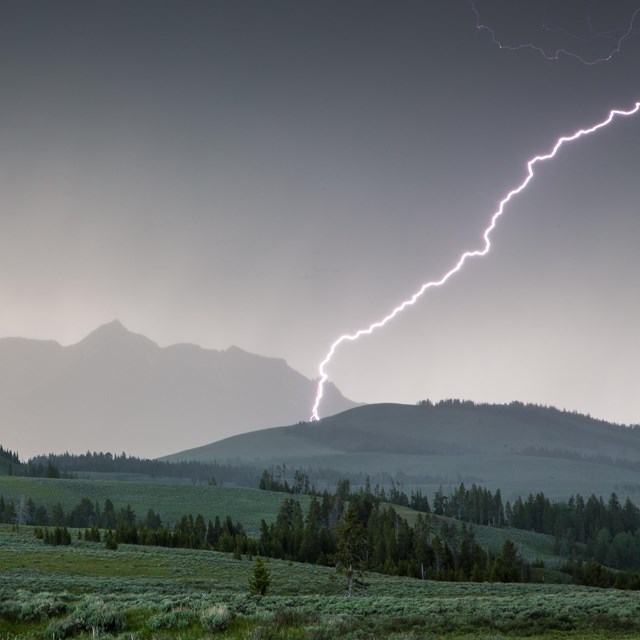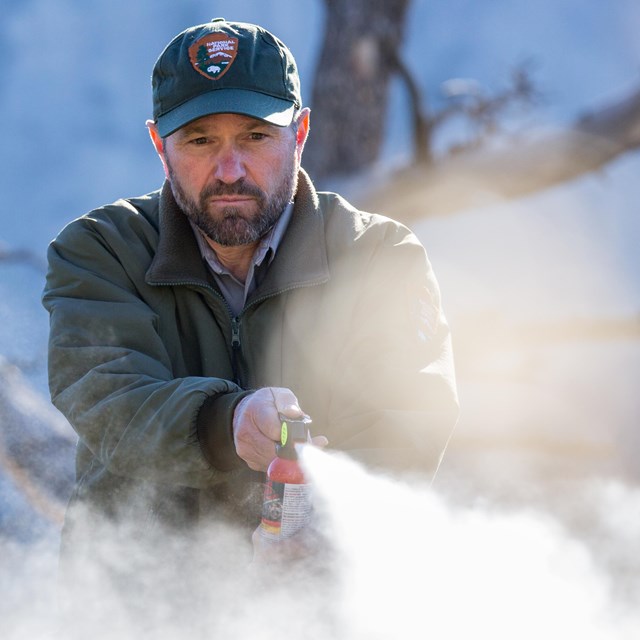Last updated: September 23, 2025
Thing to Do
Mammoth Hot Springs Trails

NPS / Jim Peaco
For hundreds of years, Shoshone and Bannock people collected minerals from Mammoth Hot Springs for white paint. These minerals contribute to the beautiful terrace structures, along with heat, a natural “plumbing” system, water, and limestone.
The volcanic heat source for Mammoth Hot Springs remains somewhat of a mystery. Scientists have proposed two sources, including the large magma chamber underlying the Yellowstone Caldera, or perhaps a smaller heat source closer to Mammoth.
At Mammoth, a network of fractures and fissures form the plumbing system that allows hot water from underground to reach the surface. The water comes from rain and snow falling on the surrounding mountains and seeping deep into the earth where it is heated. Small earthquakes may keep the plumbing open.
Limestone, deposited here millions of years ago when a vast sea covered this area, provides the final ingredient. Hot water with dissolved carbon dioxide makes a solution of weak carbonic acid. As the solution rises through rock, it dissolves calcium carbonate, the primary compound in limestone. At the surface, the calcium carbonate is deposited in the form of travertine, the rock that forms the terraces of Mammoth Hot Springs.
Notes: Thermal activity throughout this entire area. Stay on the boardwalk, designated trails, or roads at all times.
This trail is along boardwalks, paved trails, or along roads. However, there are steep grades and stairs throughout the trail network. Both the top of Canary Springs and Palette Springs are accessible via wheelchair when snow is not on the ground.
The trail from the Lower to Upper Terraces includes steep boardwalks and several hundred stairs. This strenuous trail is not recommended for people with heart, lung, or other health conditions.
More on Day Hikes in Yellowstone
-
 Yellowstone Backcountry Situation Report
Yellowstone Backcountry Situation ReportCurrent conditions for Yellowstone National Park trails and campsites.
-
 Wildlife Safety
Wildlife SafetyLearn how to help keep yourself, and the wildlife you encounter, safe.
-
 Yellowstone Day Hikes
Yellowstone Day HikesLace up your boots and explore some of the over 1,000 miles of trails in Yellowstone National Park.
